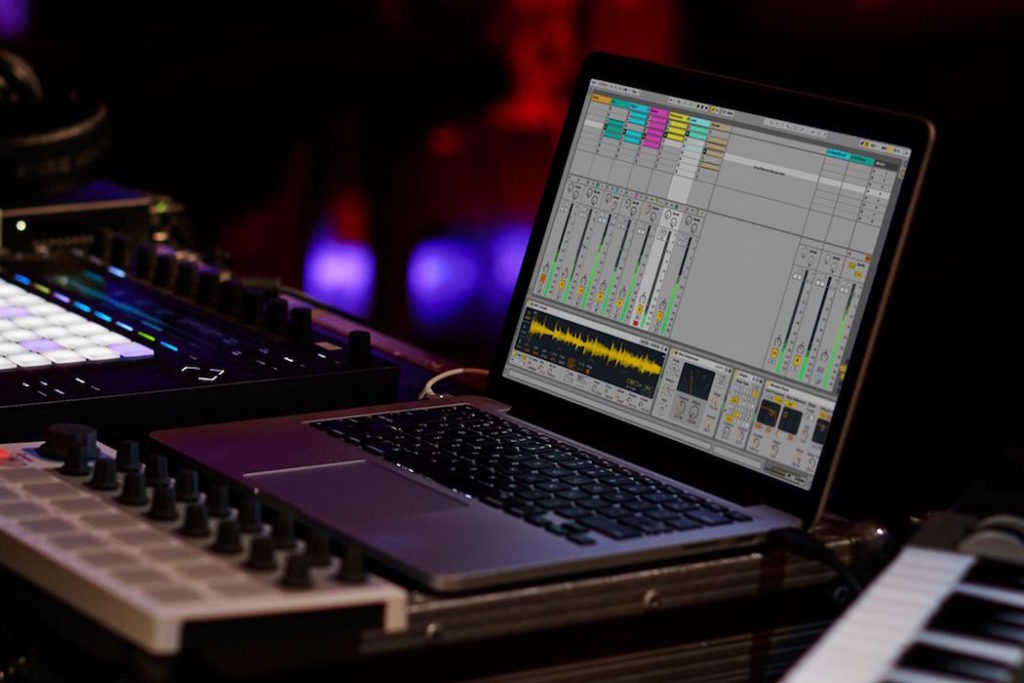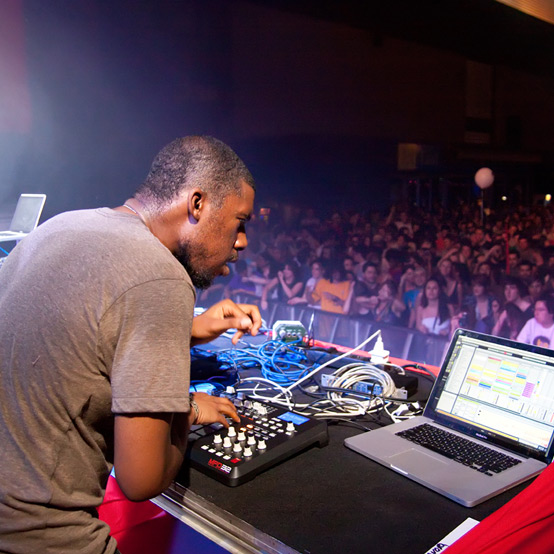Making Ableton Work For You: A Guide To Building a Better Live Set
The task of putting together a live set in Ableton is familiar to many given the program’s ubiquity and ease of use. But, ironically, it’s this ease of use that has resulted in the plethora of bland, 4/4 live sets that critics typically blame the software for, rather than the user.
Using Ableton for a live set presents a challenge despite the fact that the tool was designed for this very task. It somehow manages to seem too flexible and have too many options, ultimately overwhelming beginning users and leading to a lot of uninspired, generic-sounding music.
If you’ve written a handful of tracks and you want to connect them together in some way—whether that’s seamless or not, beat-locked or free tempo—there are countless creative ways to do this with Ableton Live sets.
Since there are already a few guides that take incredibly precise and specific ways to apply classic house, techno, and other genre-specific tropes to Ableton Live sets, we are going to be looking at the task from a broader and more conceptual angle.
Taking these ideas and applying them to your original music is going to be more meaningful than any specific formula ever can be. Ready? Let’s get started.
First Steps
The first thing to decide is where you will be summing your audio—internally or externally. If you’ll be using live audio sources in conjunction with anything coming from Ableton, you’ll need a mixer to combine these sources, or an audio interface with enough inputs. These inputs can either be processed through Ableton, or monitored directly, as most interfaces offer a mix knob to control the relationship between the two. Each option has its advantages.
Processing live sources through Ableton opens up another world of possibilities, as you’ll have access to all of your plugins and effect rack chains. However, you are also going to be dealing with some degree of latency, which can affect your performance and your ability to react to other parts in real time.
If you want to do much of your processing inside of Ableton, you’ll want to ensure that you have a system powerful enough for low latency operation, and be careful when selecting effects to avoid those that add unacceptable levels of latency for live performance.
Dividing Lines
Regardless of whether you decide to sum your audio inside or outside of Ableton, the next question you’re going to want to answer for yourself is how you want your tracks divided up inside of the software. A common path is to assign each channel to one of four or five main audio groups that have been summed from the recording of that track.
Having your kick on its own channel is crucial, as taking out the kick (either via filtering or muting) is one of the most common ways of building anticipation and then increasing energy and momentum.
Besides a channel devoted just to the kick, it’s common to have a channel that contains only snare, one for only high hat elements, one that has just bass synth, a group that includes any vocal elements your track may contain (whether they are sampled or pre-recorded), and perhaps separate channels for other melodic elements. But otherwise, many elements are often better off grouped together.
It’s easy to give yourself more choices than you really need when working on this pre-production stage of the process. This can seem like a positive in the comfort of your own studio, feet up and coffee in hand, but allowing yourself too many options is going to become a negative in a high energy stage situation.
Not Everything Needs to be Live
One way to decide what elements you think you will need is to really examine what elements are most dynamic in your tracks. How many elements are changing versus how many things are remaining static at any given point in your track?
Are the high hats steady and sonically similar throughout the song? If so, you probably don’t need a channel devoted just to them. But if there’s an element in your track that has a lot of movement and motion, perhaps a synth line or other melodic element that is changing over time, it would make sense to give yourself the ability to tweak that sound in real time during your performance.
While it may seem like “cheating” to have some of your most consistent stems saved as bounced audio tracks, the reality is that it will allow you to engage more meaningfully with the elements that you do have control over, as you’ll be less worried about everything gelling together properly.
Going through all of your musical ideas and organizing them in this fashion is going to take time, especially if each of your compositions use different sound sources and different elements interplaying with each other, as is common in today’s world of infinite sound packs and software synths.
But it’s worth it to put in this work in advance because the preparation truly shows on stage. So decide in advance: Which elements are you going to manipulate in real time, and which are you going to leave alone?
Making Connections Between Sections
Once you’ve decided which parts will be static and which will be under your control, you’ll want to think about how you’ll move from section to section within each track, as well as how you’ll connect tracks together.
It’s easy to feel the urge to replicate your complex arrangements exactly by hand, but this is often unnecessary as smaller gestures often make huge impacts when heard on a club sound system. Instead of working to replicate your arrangement, think about your track in terms of increasing and decreasing energy.
What elements are changing when there’s an increase felt in the energy of the track? Similarly, what elements change or drop out when the track decreases in energy? Thinking about it in these terms will help guide the way you shape your live set.
It’s often enough to have two or three sections of your tracks, as long as the way you work between them is dynamic and purposeful.
For example, dropping out the kick drum, as mentioned, is the most common way to drop the energy for a set number of bars. Increasing the cutoff on a bass or lead synth, or sending more of that signal to a reverb send, is a popular way to increase energy.
Increasing the number of hits in a sample pattern is another way to amp up the room, but really the way to do this is going to be context-dependent. Study your own work and the work of others. The results of this may surprise you and you may just learn a thing or two about your own productions!
Once you’ve begun to answer these questions for yourself on a per track basis, you may want to start plotting on a more macro level. Are your tracks arranged in an order where there will be any key clashes? (Consult the Circle of Fifths if necessary.) Are there going to be any huge changes in tempo? If so, how will you account for them and make those transitions in your set?
Make Music With Your Body, Not Just Your Eyes
One thing that you’ll want to practice, no matter how you answer these questions, is developing muscle memory. By deciding on controls and clearly labeling your chosen MIDI controller in advance, you’ll be able to start practicing those movements at home.
The more your fingers move to those places without your eyes, the quicker you’ll be able to reach for them in a real world situation, just like the practice of an acoustic musician.
How organized should you be? The breadth of controllers and iPad apps make it easy in this day and age to keep track of what you are doing on screen. But one technique that can add to the element of feeling like things are random, live, more spontaneous—even like you are playing with other people—is leaving some things unlabeled so you are reacting to what you hear in the moment.
Is it better to know all of your sounds and options, or to have things that you don’t remember and you are throwing things on the wall and arranging live? The latter technique is popularly employed by Flying Lotus, whose live sets epitomize the infinite possibilities that his music can take.
Finally, have a contingency plan if things go wrong, because there’s a strong likelihood something will. Even if that backup plan just means jamming on a drum machine for half an hour, with access to your core tracks on a simpler system, at least the crowd will go home entertained. And hey—don’t forget to look up every once in a while!
Leo Maymind is a producer, DJ, and writer living in Los Angeles, CA. He is obsessed with sound, and you can reach him at lmaymind@gmail.com.
Please note: When you buy products through links on this page, we may earn an affiliate commission.








